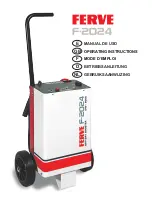
Chevrolet SS Sedan Owner Manual (GMNA-Localizing-U.S.-10122752) -
2017 - crc - 8/31/16
334
Vehicle Care
15. Tighten the wheel nuts firmly in
a crisscross sequence, as
shown.
16. Lower the jack all the way and
remove the jack from under the
vehicle.
17. Tighten the wheel nuts firmly
with the wheel wrench.
Storing a Flat or Spare Tire
and Tools
{
Warning
Storing a jack, a tire, or other
equipment in the passenger
compartment of the vehicle could
cause injury. In a sudden stop or
collision, loose equipment could
strike someone. Store all these in
the proper place.
Replace the jack, tools, container
and flat tire in the trunk by reversing
the steps used to remove them.
Full-Size Spare Tire
If this vehicle came with a full-size
spare tire, it was fully inflated when
new, however, it can lose air over
time. Check the inflation pressure
regularly. See
and
for
information regarding proper tire
inflation and loading the vehicle. For
instructions on how to remove,
install, or store a spare tire, see
After installing the spare tire on the
vehicle, stop as soon as possible
and check that the spare is correctly
inflated. The spare tire is made to
perform well at speeds up to
112 km/h (70 mph) at the
recommended inflation pressure, so
you can finish your trip.
The full-size spare includes a TPMS
sensor. The TPMS will not monitor
or display the spare tire air pressure
until the tire/wheel is installed at one
of the four tire/wheel positions on
the vehicle and matched to the new
position. See
for information
about matching the spare tire to
the TPMS.
Have the damaged or flat road tire
repaired or replaced and installed
back onto the vehicle as soon as
possible so the spare tire will be
available in case it is needed again.
Do not mix tires and wheels of
different sizes, because they will not
fit. Keep the spare tire and its wheel
together.
















































